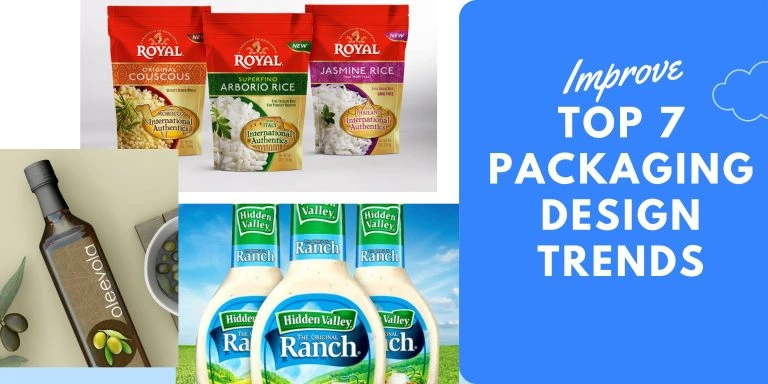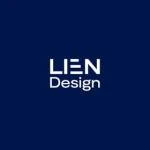
The world of packaging design is not static as we approach 2024. This is driven by the changing tastes of consumers, technological advancements and a growing focus on sustainability.
This means that businesses must take note and adapt where necessary to stay ahead of their competitors and attract customers’ attention.
This blog post looks at nine packaging design trends that will have huge implications in 2024.
1.Sustainable Packaging Materials: Businesses are turning their eyes on sustainable packaging materials since they are more concerned about environmental issues. A good way to ensure this is to reduce waste from packages. The pressure towards sustainable practices has created a global movement against plastics.
For instance, biodegradable plastics made from cornstarch or sugarcane can be used for sustainability purposes. Such plastics break down naturally over time therefore reducing chances of plastic waste accumulation in landfills and oceans.
Recyclable cardboards or paper boards are also considered sustainable options. They can easily be recycled into new packages or other paper products. Also, compostable package materials like plant based PLA (polylactic acid) or mushroom-based mycelium offer a greener option than traditional plastics.
Furthermore, such eco-friendly attributes as innovative seaweed- based packaging, edible packaging using rice starch and reusable alternatives like glass jars and stainless steel containers are becoming more popular with the public.
2.Transparent Packaging Material: Transparent packaging material has been around for many years in the industry so that consumers could see what was inside the product better. But even though some trends have been used in its design elements for decades now, it has recently emerged again due to minimalistic designs and innovations in custom design.
However, one drawback of transparent packing is that more customers see what’s inside the product and therefore less you can convince them with messaging. For instance, by looking at each perspective through an experienced package designer who knows how each element interacts with the natural product.
3.Natural, Earthy Colors: Additionally, many brands are taking the eco-trends quite seriously to make earthy colors a priority. These colors are also prevalent in sectors like organic food and cosmetics packaging. Nevertheless, natural colors are now being used by brands outside the organic market to join the sustainability movement.
Illustrated Designs: Illustrated designs have been on trend for a long time in various creative fields such as packaging and advertising. They combine digital illustrations with hand-made creativity that expresses emotions and sends messages.
Are you looking for stunning print ads that captivate your audience? Connect with Liendesign, a trusted print advertising agency and how we can help you create eye-catching campaigns that leave a lasting impression.
Into visual communication illustrated designs could bring personality or distinctiveness. Unlike stock images or generic graphics, illustrations can be tailored to match the brand\'s personality and storytelling. It helps brands to stand out from the crowd and create an impression that will resonate with their audience through sophisticated designs.
4.Clean and Simple Minimalist Designs :Minimalist packaging designs provide a refreshing alternative to a world saturated with overwhelming visual stimuli for any kind of print advertisement. This trend which has gained significant momentum over recent years is predicted to continue ruling in 2024.Minimalist designs embrace simplicity, clean lines, and negative space, allowing the product to take center stage.
The power of minimalism is increasingly recognized by brands as it creates a perception of sophistication, elegance, and modernity. Minimalist packaging design allows the brand to convey its message aesthetically by eliminating unnecessary elements that might be found in other cases where cluttered look is preferable.
Besides that, minimalist designing often incorporates sustainable materials while reducing excess packaging thus supporting growing need of eco-conscious customers. In 2024 this trend will continue with more brands expected employing negative space subtle typography and limited color palette into packaging that stands out through its unassuming simplicity.
5.Textured Packaging Tactile packaging remains one of today’s popular trends which many companies are exploiting for their purposes. Brands employ innovative techniques such as unique textures incorporation as well as embossing of raised elements on their package design so as create multisensory experience engaging both sight and touch.
Textured packaging not only adds depth and dimension to the overall aesthetic but also enhances the product’s perceived value and quality. Through their designs like imprinted patterns, raised logos or textured material, brands can make an unforgettable experience that distinguishes them from other similar products on covered retail shelves.
In addition, it is expected that brands will increasingly leverage texture in their packaging to create a physically engaging experience that invites consumer touch and lingers in the mind.
6.Personalized Packaging :Customers today desire personalized experiences which make them feel important and understood. Personalized packaging is an emerging trend that focuses on this desire and allows brands to create unique and tailored connections with their customers.
Besides being custom packaging design created for a particular consumer or solving particular problem, personalizing your product gives you a more profound reason why people should buy it.
Conclusion: The trends we discussed here provide creative direction; they are more than fashion. This fosters deeper relationships with shoppers. Matching your packaging with new, vibrant line designs can make each customer interaction matter, leaving behind an indelible impression on them all.

